A few photos I took at Kai Tak airport, Hong Kong, around 1985. These were slides, and they are well preserved. Still, of course after scanning I had to so some touchups and restoration.
The famous checker board:
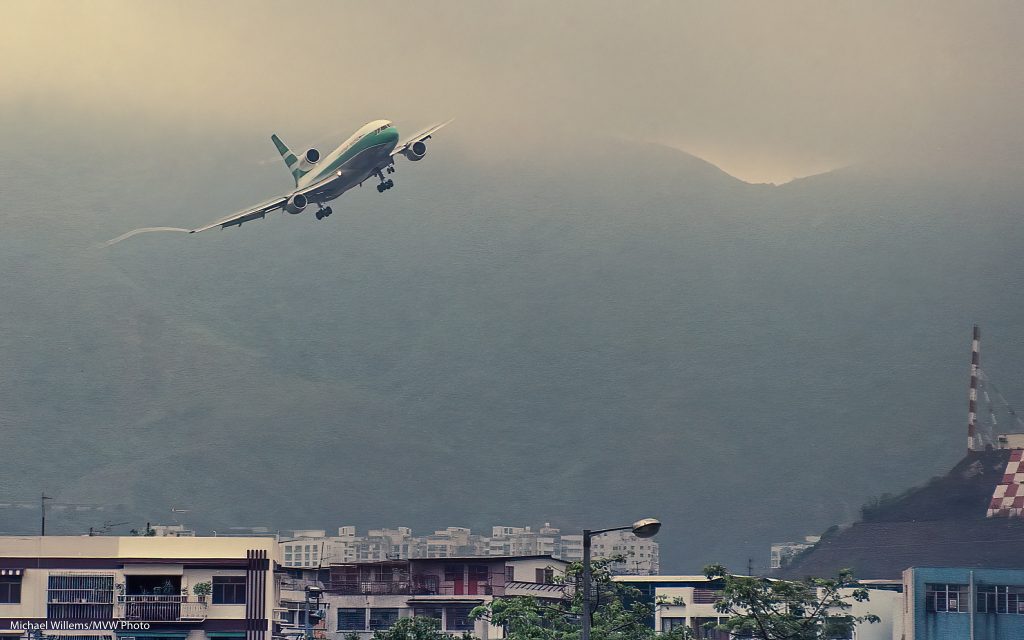
Pretty steep tun at very low altitude. An adventure, landing at Kai Tak.
And the large aircraft were amazing. I was at the Hong Kong aviation club, at the foot of Rwy 13. I was learning to fly Cessnas at the time. And afterward we’d drink in the bar and see htis:
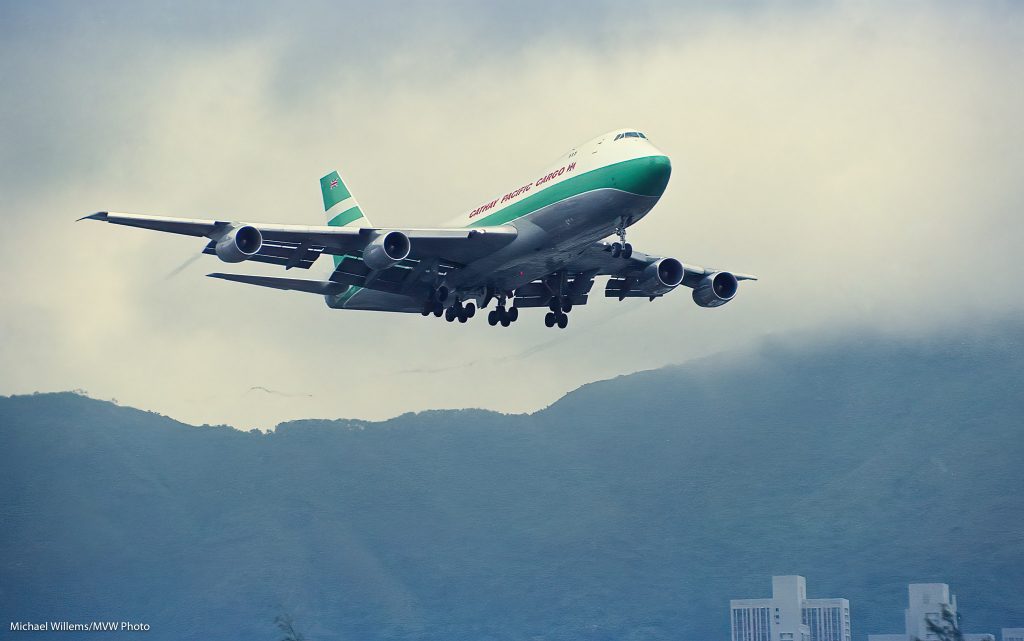
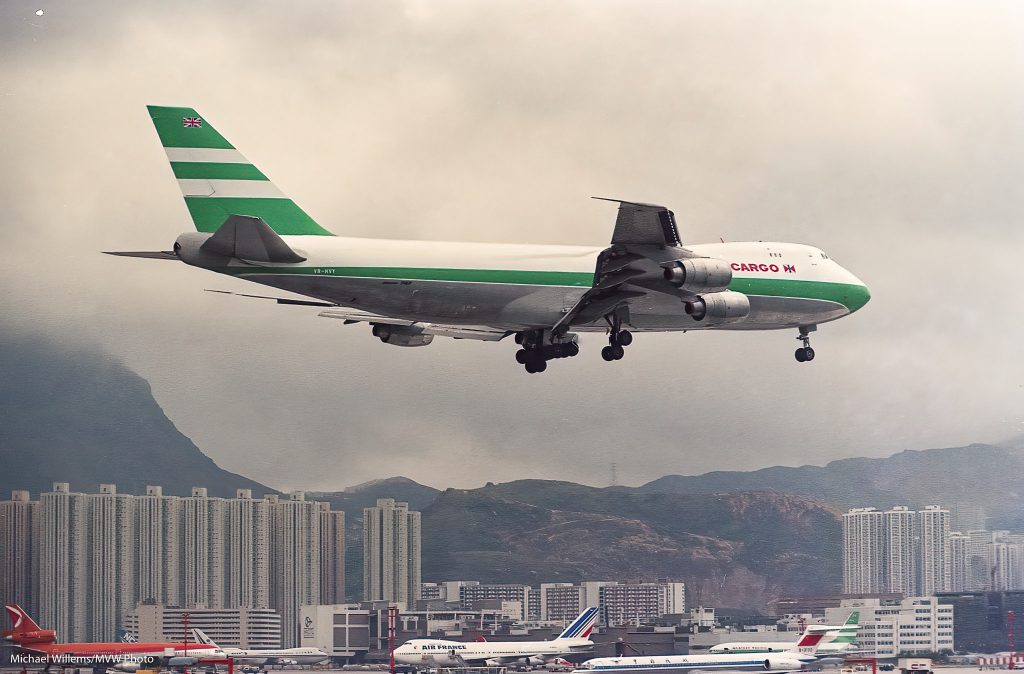
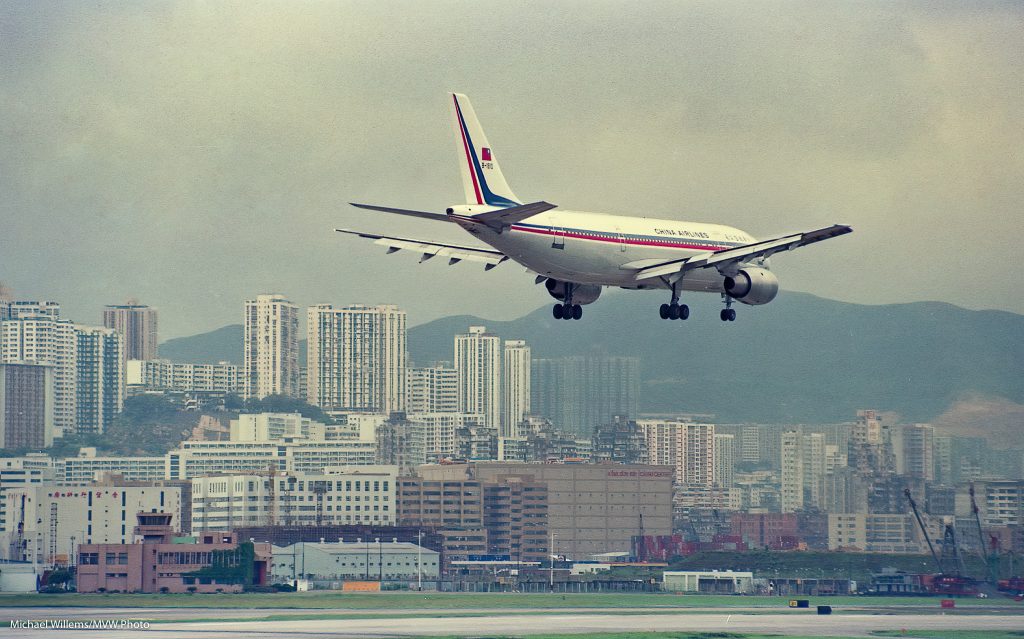
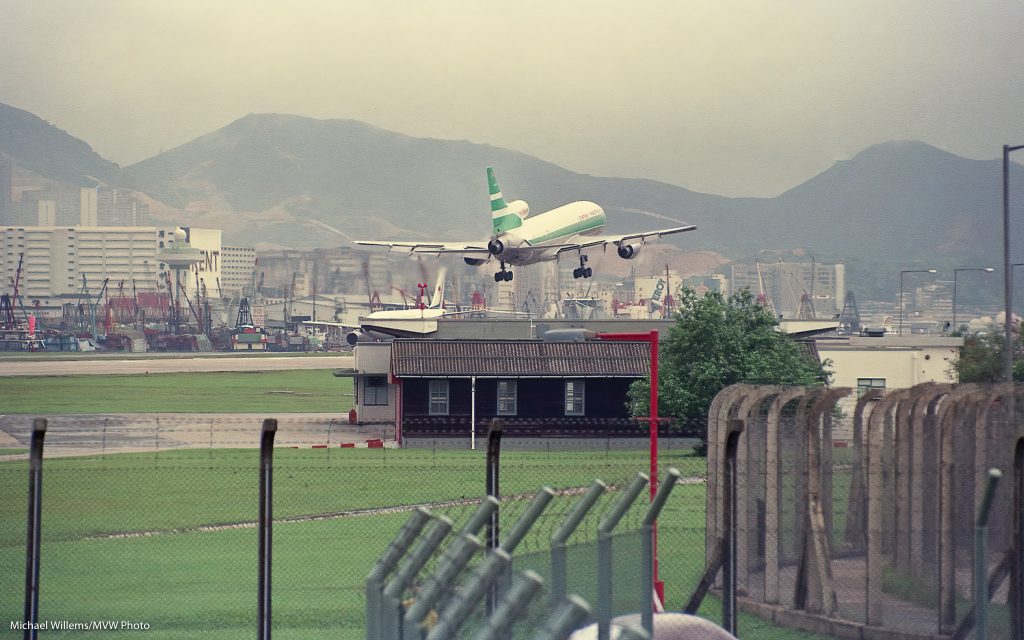
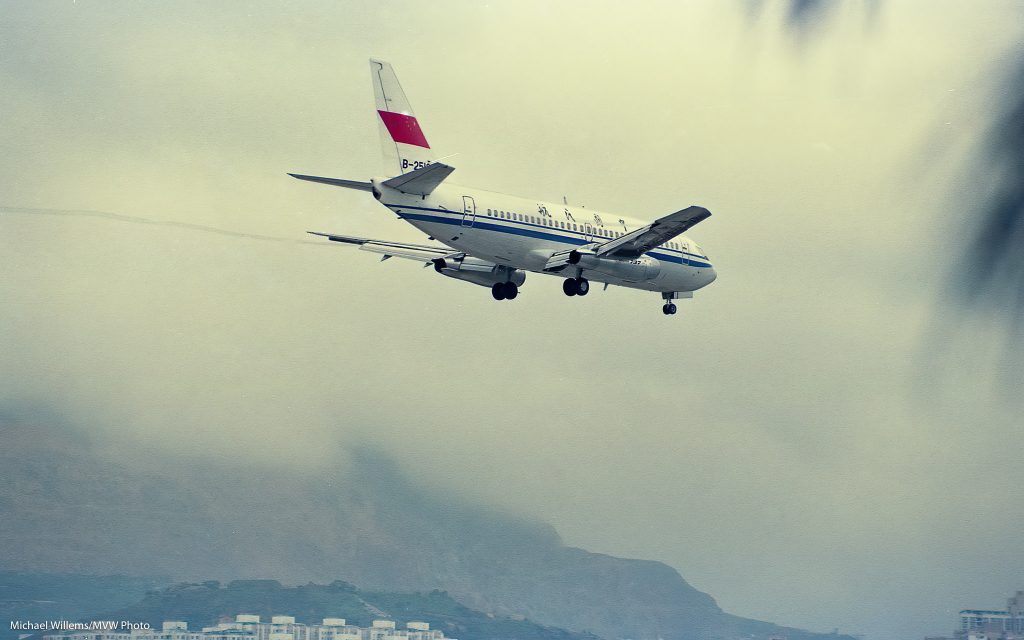
Anyone who has been there will recognize this – and feel the humidity, small the smells, and feel like they’re there again. That is the power of photography.
Click to see larger. Ektachrome; touched up with Lightroom and de-noised with Avast De-noise AI.


